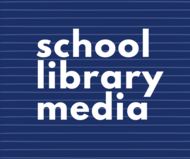
(View Complete Item Description)
Work In Progress: These short poems feature sight words and introduce Kindergarten and First Graders to basic Library concepts. I pair them with activities from Write-N-Seek Sight Words by Immacula A. Rhodes (New York: Scholastic, 2017) to introduce the topic of the lesson and to activate prior knowledge.
How I use them:
As students are coming in and finding their seats, they pick up a copy of the sight word poem that has one of Rhodes’ activities on the other side. They begin doing the activity while we are waiting for everyone to get seated. Once everyone is seated, I direct them to flip over to the sight word poem side. It’s OK that they didn’t all finish the activity. They can finish it later or use it to engage with caregivers at home. I encourage the students to read the poems over and over again with their caregivers in order to help them develop fluency in reading.
For Kindergarten, I read the complete poem, then I have them echo-read line-by-line. For First Grade, I read the complete poem, then we all read the poem together. Reading the poem first helps prepare the students for success in the choral reading. I never ask students to cold-read aloud in the media center. Reading aloud is a stressful and embarrassing task for many students and I don’t want them to associate the library with stress and embarrassment! Reading the poem with expression is important. It helps engage the students and echoing the expression helps them develop fluency and comprehension for their own reading.
The poems are designed to introduce library lessons and serve as my Activator for the lessons.
Classroom teachers sometimes follow up by having students work in pairs to practice reading the poems with expression.
I hope you find these poems contribute to your students’ success!
Material Type:
Reading,
Teaching/Learning Strategy,
Vocabulary
Author:
MARGARET SULLIVAN BRANNON



















